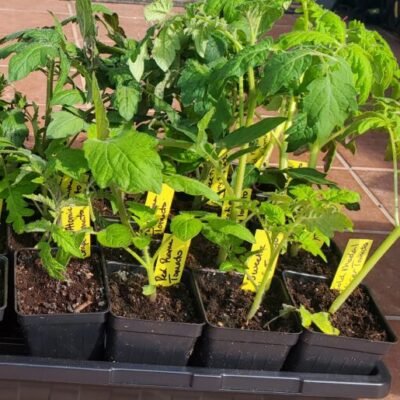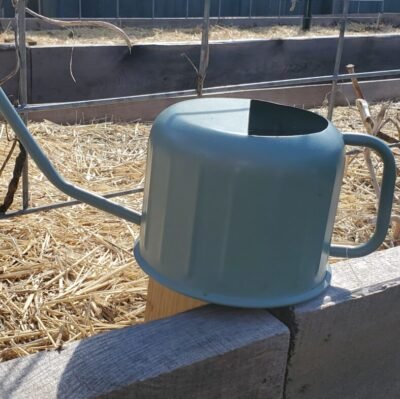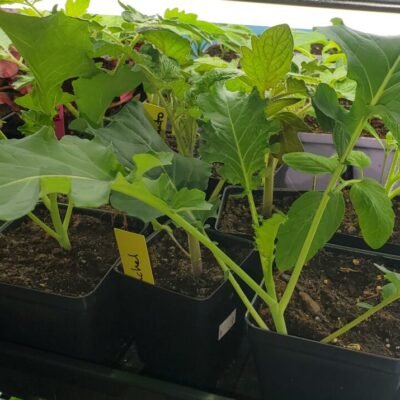How to Transplant Seedlings
How to Transplant Seedlings
Spring has arrived and it will soon be time to transplant your seedlings out to the garden once the threat of frost has passed. You are well on your way to having a lush garden that will produce a beautiful abundance of food.
Hardening Off Seedlings
We talked a bit about hardening off seedlings previously, let’s take a quick refresher. Your seedlings have been pampered inside all winter and are not ready to be thrown to the outdoors just yet. They need to be acclimated to their new environment first.
Hardening off seedlings is a fairly simple process.
- Day 1 – Set your seedlings outside in the sun for an hour and bring them back in.
- Day 2 – Set your seedlings outside in the sun for 2 to 3 hours.
- Day 3 – Set your seedlings outside in the sun for 3 to 4 hours.
- Day 4 – Set your seedlings outside in the sun for 4 to 5 hours.
- Day 5 – Set your seedlings outside in the sun for 6 to 7 hours.
- Day 6 – Set your seedlings outside in the sun for 8 hours.
- Day 7 – By the 7th day, your seedlings should be properly hardened off and are safe to be transplanted to their permanent home in the garden.

Selecting Where to Transplant Seedlings
Choosing where plants are going to be placed in your garden will play a part in the success that you have.
Casting Shade
You don’t want to plant tall things such as tomatoes where they will cast shade on other plants that need full sun like peppers. This could be used as an advantage to shade plants that need less sun.
Fussy Watering
Avoid putting water loving plants in with plants that like to dry out between watering. For example, plant your cucumbers, zucchini, and melon away from tomatoes and peppers.
Personal Space
Peppers love to “hold hands” under the soil, this means they may benefit from being planted closer together. While things like cucumbers and zucchini are going to need a wider distance between one another.
The Take Over
Potatoes should be planted in a space designated specifically for potatoes so they don’t take over your garden beds. This is especially true in regards to planting herbs. Herbs like mint and rosemary will make you rue the day you put them in the wrong place. They will grow where you plant them long after you have left this world.
Herbs are best planted in pots, GreenStalks, or a designated space. The same goes for certain flowers. Chamomile and Bachelor Buttons will forever reseed and spread where planted. Therefore, they are a poor choice for garden beds that are planned for produce. Better companion flowers for your veggie garden would be marigolds, red salvia, or zinnias.

Time to Transplant
Now that we talked about placement, let’s talk about transplanting itself. I loosely follow the square foot gardening method. A plant per each square foot. I set out my plants where I think they will do best, make sure everyone has room, and then start digging their holes.
Once your holes are set, gently remove your seedling from its pot, place it in the hole and cover the base with dirt making sure it is firmly in the ground. Be extra careful to not disturb the roots of cucumbers, zucchini, and melons. They are the most likely to suffer transplant shock. When you have everything in the ground, give it a good deep watering.
Remember, it is better to water at the base of the plants rather than on the leaves themselves. This helps prevent disease that can occur from too much moisture. That is also why it is important to stay on top of pruning, especially if you are going to follow a compact growing style as well.
Your seedlings are probably too small at this point to require much support and are likely too far away from the trellis. As they grow taller you can train them to your trellis by using twine to carefully tie them up.
Celebrate
You did it! Take a moment to soak in the fact that you germinated seeds, up-potted them, kept them alive, and have now transplanted them outside. That is an amazing job! You will soon be reaping the rewards. Happy planting!

Disclaimer: Note, that I am not sponsored by or affiliated with GreenStalk. I do, however, believe in their company and their products.
Author
liv@livlifeoutdoors.com
Related Posts
5 Easy Plants to Grow for Beginners
5 Easy Plants to Grow for Beginners Starting out can feel overwhelming, but there are some pretty easy plants to grow for...
Saving on Garden Supplies – What is in store for next season?
Saving on Garden Supplies – What is in store for next season? As you put your garden to bed and reflect on...
Simple Guide For End of Season Garden Cleanup
Simple Guide For End of Season Garden Cleanup The end of season garden cleanup is a bittersweet time. A brisk chill...
Next Garden Season: A Plan for Growth
Next Garden Season: A Plan for Growth It may seem early, but now is the time that I plan ahead for the...
How to Harvest the Best Tomatoes You will Ever Eat
How to Harvest the Best Tomatoes You will Ever Eat Harvesting the best tomatoes from the garden is what we strive for...
How to Get Rid of Garden Waste
How to Get Rid of Garden Waste Is garden waste eating away at your sanity? You pruned your heart away, weeded until...